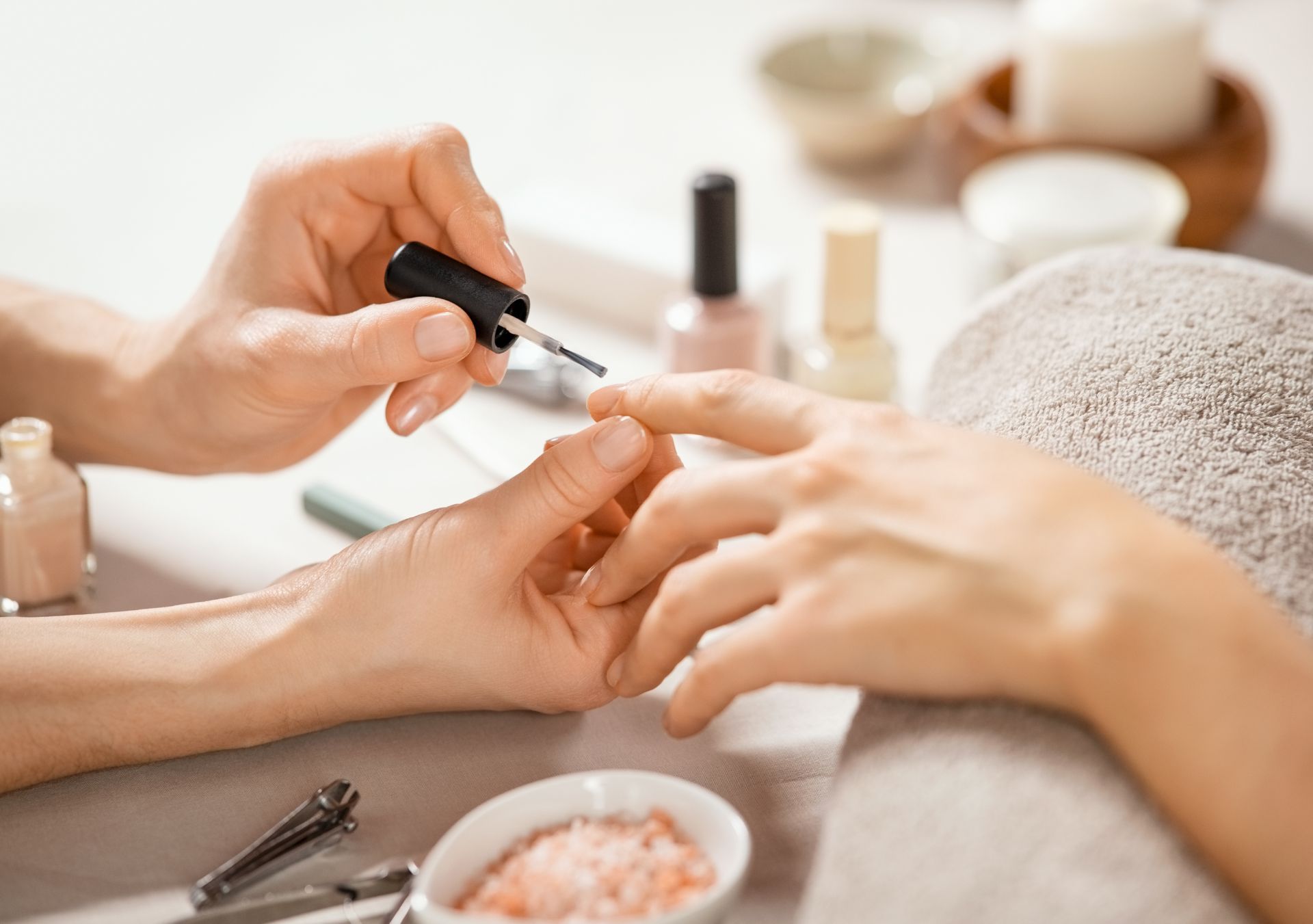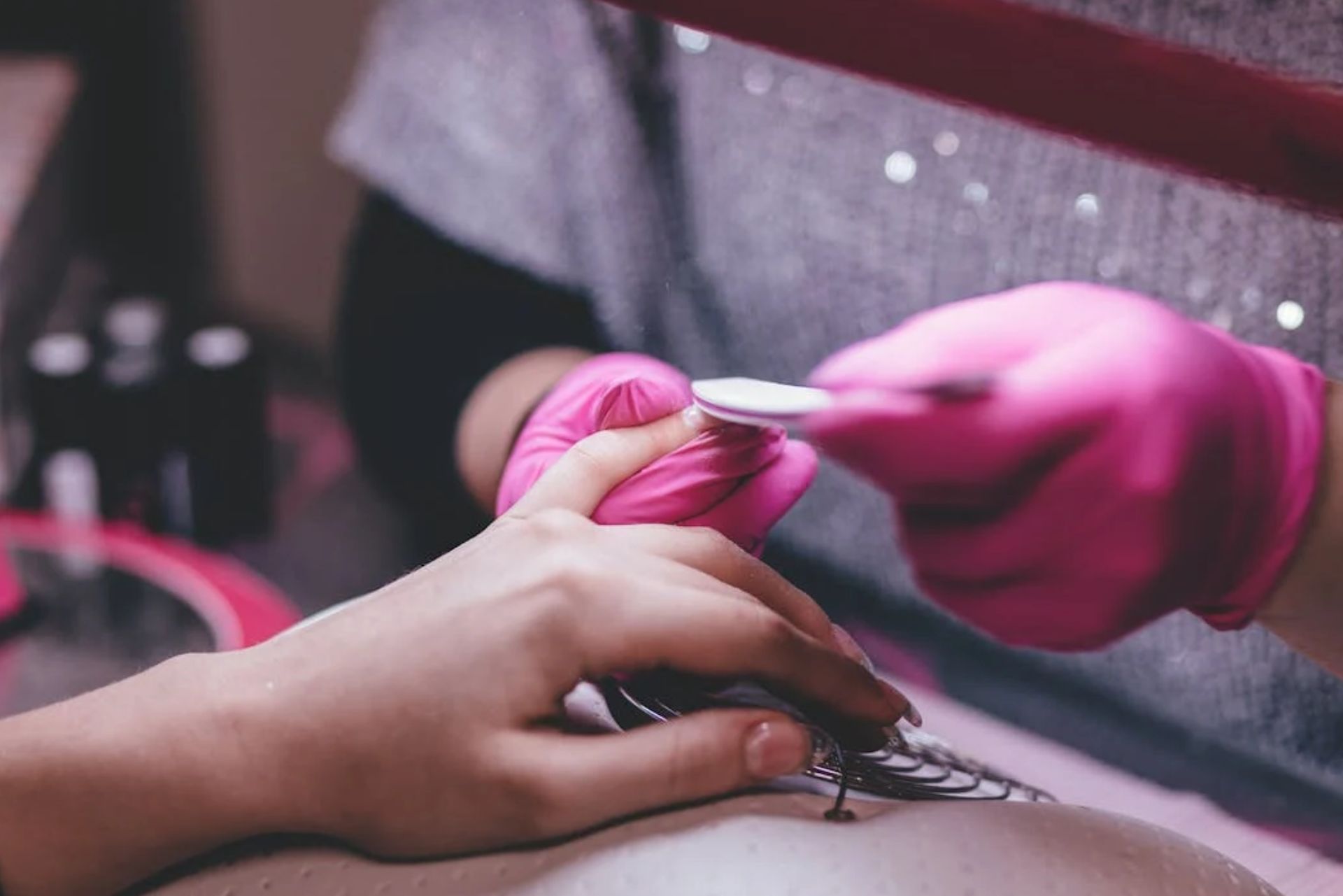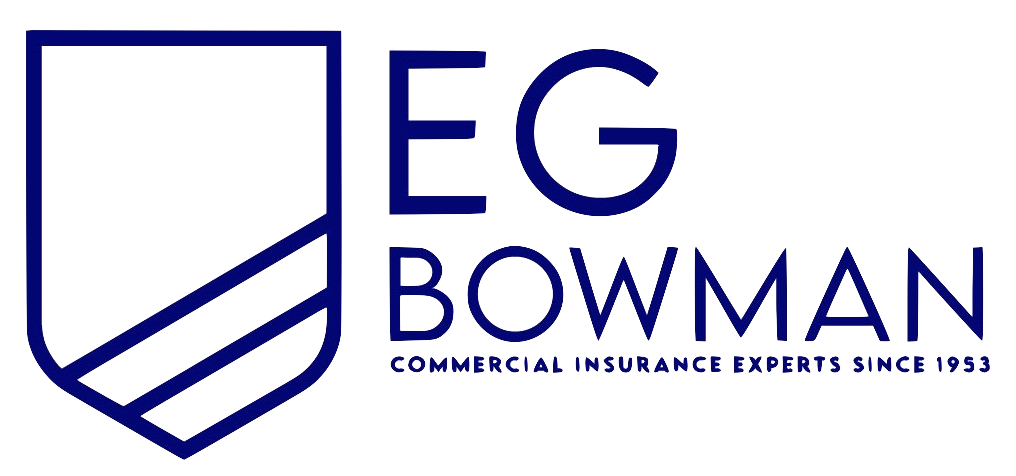
Most Common Business Policies
Index
Contact Us
Understanding the Basics of Nail Salon Insurance
Nail salon insurance is a specialized form of coverage designed to protect beauty professionals from potential risks associated with running a nail salon. This type of insurance can safeguard your business against liabilities, property damage, and other unforeseen circumstances that may arise in the beauty industry.
Importance of Nail Salon Insurance
The beauty industry is filled with inherent risks, including client injuries, property damage, and theft. Without adequate insurance coverage, a single incident could lead to overwhelming financial burdens. Nail salon insurance not only protects your business's assets but also enhances your credibility, giving clients peace of mind when they choose your services.
Moreover, having proper insurance can help you comply with legal requirements. Regulations in New York state may mandate specific insurance policies to operate legally and safely. This compliance not only shields you from potential legal issues but also demonstrates your commitment to professionalism and client safety, which can be a significant selling point in a competitive market.
Types of Coverage for Nail Salons
Nail salon insurance typically includes several types of coverage to cater to different risks. Common types include:
- General Liability Insurance: Protects against third-party claims for bodily injury or property damage.
- Professional Liability Insurance: Covers claims arising from professional services, such as nail damage or skin reactions.
- Property Insurance: Safeguards your salon’s physical assets, including equipment, furniture, and supplies, against risks like fire or theft.
- Workers' Compensation Insurance: Required by law if you have employees, this insurance provides coverage for workplace injuries.
Understanding these various types helps salon owners choose the most suitable policies for their specific needs. Additionally, salon owners might consider adding coverage for business interruption, which can provide financial support in the event that the salon must temporarily close due to a covered incident, such as a natural disaster or a significant equipment failure. This type of coverage is crucial for maintaining cash flow and ensuring that you can continue to pay employees and meet other financial obligations during challenging times.
Furthermore, as the beauty industry evolves, so do the risks associated with it. Emerging trends, such as the increasing use of advanced nail technology and organic products, may introduce new liabilities. Therefore, salon owners should regularly review their insurance policies to ensure they are adequately covered for the latest services and products they offer. Engaging with an insurance professional who specializes in the beauty industry can provide valuable insights into the most relevant coverage options tailored to your salon's unique operations.

New York State Requirements for Nail Salon Insurance
In New York, nail salons are subject to specific insurance requirements designed to protect both businesses and customers. These regulations ensure that essential coverages are in place to manage risks associated with operating a salon. The beauty industry, particularly nail salons, is not only a vibrant part of New York's economy but also a sector that faces unique challenges and liabilities, making adequate insurance coverage not just a legal obligation but a vital aspect of operational success.
Mandatory Insurance Policies in New York
New York law mandates workers' compensation insurance for any salon with employees. This insurance protects employees who might be injured while working in the salon and covers medical expenses and lost wages. Furthermore, nail salons should also consider general liability insurance to meet basic risk management needs. This type of insurance is essential as it covers claims related to bodily injury or property damage that might occur on the salon premises, ensuring that both the salon and its clients are safeguarded against unforeseen incidents.
Obtaining these policies is crucial not only for compliance with state laws but also for creating a safe work environment and protecting the financial health of the business. In addition to legal compliance, having the right insurance can enhance a salon's reputation, as clients are more likely to choose a salon that demonstrates a commitment to safety and professionalism. This proactive approach can lead to increased customer loyalty and potentially higher revenues.
Additional Insurance Options for Comprehensive Coverage
Aside from mandatory policies, salon owners may also benefit from additional coverages, such as:
- Equipment Breakdown Insurance: Covers the cost of repairing or replacing damaged salon equipment, such as nail drills, sterilizers, and other essential tools that are critical for daily operations.
- Business Interruption Insurance: Provides financial assistance if your salon operations are halted due to a covered incident, such as a fire or natural disaster, allowing you to maintain your financial stability during recovery.
- Cyber Liability Insurance: Protects against data breaches and cyber-attacks, which can be a concern with electronic records of clients, especially as many salons now utilize digital booking systems and maintain sensitive customer information.
Investing in these additional options can lead to more comprehensive coverage and better business protection. Moreover, salon owners should also consider professional liability insurance, which can protect against claims of negligence or malpractice, particularly in cases where a client may experience an adverse reaction to a service. This layer of protection not only shields the business from potential lawsuits but also reinforces the salon's commitment to high standards of care and service quality. By understanding and implementing a robust insurance strategy, nail salon owners can focus on what they do best—providing exceptional beauty services to their clients—while having peace of mind regarding their business's safety and sustainability.
Cost of Nail Salon Insurance in New York
The cost of nail salon insurance can vary widely based on several key factors. Understanding these factors is essential for salon owners looking to budget effectively and find affordable insurance options.
Factors Influencing Insurance Premiums
Several factors influence the cost of insurance premiums for nail salons, including:
- Location: Salons in high-risk areas or regions with higher costs of living often face higher premiums.
- Size of the Business: Larger salons with more employees or extensive services typically carry higher insurance costs.
- Claims History: Salons with a history of multiple claims may see increased premiums due to perceived risk.
- Coverage Types: The specific coverage selected will also impact costs, with more comprehensive policies generally costing more.
By evaluating these factors, salon owners can better prepare for the financial impact of insurance on their business. Additionally, the type of services offered can also play a role in determining premiums. For instance, salons that provide more specialized services, such as nail art or chemical treatments, may face higher insurance costs due to the increased risk associated with these procedures. It’s crucial for salon owners to assess their service offerings and understand how they align with their insurance needs.
Ways to Lower Your Insurance Costs
To manage and potentially lower insurance costs, salon owners can consider several strategies:
- Shop Around: Comparing quotes from different insurance providers can reveal significant savings.
- Bundle Policies: Purchasing multiple policies from the same provider often results in discounts.
- Maintain a Good Claims History: Reducing the number of claims filed can help lower premiums over time.
- Implement Safety Protocols: By enhancing workplace safety, salons may qualify for lower rates.
Employing these strategies can help salon owners manage their insurance expenses effectively. Furthermore, establishing a proactive approach to risk management can also be beneficial. This might include regular training for staff on safety practices, ensuring that all equipment is well-maintained, and keeping up with the latest health regulations. By fostering a culture of safety and compliance, salon owners not only protect their clients and employees but also position themselves favorably with insurance providers, potentially leading to lower premiums and better coverage options.
How to Choose the Right Insurance Provider
Selecting the right insurance provider is crucial for ensuring adequate coverage and support when needed. An informed decision can lead to peace of mind and better business outcomes.
Evaluating Insurance Providers
When evaluating potential insurance providers, consider the following:
- Reputation: Research the company's history and customer reviews to understand its reliability.
- Coverage Options: Ensure the provider offers the specific insurance types relevant to your salon needs.
- Response Time: Assess how quickly the provider responds to inquiries and claims, which can impact your salon's recovery process.
- Pricing: While price is important, focus on the value offered, including coverage limits and service quality.
Taking the time to thoroughly evaluate these factors will help you choose a provider that aligns with your salon's needs. Additionally, consider the financial stability of the insurance company. A provider with a strong financial rating is more likely to be able to pay out claims when necessary, ensuring that your business can recover from unexpected events. You can check ratings from independent agencies like A.M. Best or Standard & Poor's, which assess the financial health of insurance companies.
Questions to Ask Potential Providers
Before finalizing your insurance provider, consider asking the following questions:
- What types of coverage do you recommend for a nail salon?
- Can you provide references from other nail salon owners?
- How does your claims process work, and how quickly can claims be resolved?
- Are there any discounts or programs for salon owners that I might qualify for?
These questions will help you gauge the provider’s level of expertise and commitment to serving salon owners. Furthermore, inquire about the provider's customer service philosophy. Understanding how they handle client relationships and support can give you insight into the kind of assistance you can expect when you need it most. A provider that prioritizes customer satisfaction will likely be more responsive and helpful during challenging times, making a significant difference in your overall experience.

Claiming Insurance for Nail Salon Damages
In the event of an incident that results in damage or loss, understanding how to effectively file an insurance claim is vital to recovering swiftly. Whether it's due to a natural disaster, equipment failure, or an unfortunate accident, being prepared can make all the difference in minimizing downtime and financial loss.
Steps to File an Insurance Claim
The process for filing a claim typically involves several steps:
- Notify Your Insurer: Contact your insurance company as soon as possible after the incident.
- Document the Incident: Collect evidence, such as photos or witness statements, to support your claim.
- Fill Out Claim Forms: Complete any required forms and provide detailed information about the incident.
- Follow Up: Keep in regular contact with your insurer to monitor the progress of your claim.
Following these steps can streamline the claims process and increase the likelihood of a favorable outcome. Additionally, having a checklist of necessary documents and evidence can help ensure that nothing is overlooked during this critical time.
Understanding the Claim Process
The claim process can sometimes be lengthy and complicated. Underlining the importance of patience, salon owners should be prepared for potential challenges along the way. Each insurance company may have different protocols and timelines, which can affect how quickly claims are processed.
Be sure to read your policy carefully to understand what is covered and maintain all documentation related to your claim. If needed, consult with an insurance advisor to navigate complex situations effectively. Furthermore, consider keeping a detailed log of all communications with your insurer, including dates, times, and the names of representatives you speak with. This can be invaluable if disputes arise or if you need to escalate your claim. Understanding your rights and responsibilities can empower you during this process, ensuring that you are adequately compensated for your losses and can return to business as usual as swiftly as possible.
Frequently Asked Questions about Nail Salon Insurance in New York
Many salon owners have similar inquiries regarding nail salon insurance. Addressing these frequently asked questions can provide useful insights for current and prospective salon owners.
Common Misconceptions about Nail Salon Insurance
One common misconception is that small salons do not need insurance. However, regardless of size, all businesses face risks that could negatively impact their financial stability. Another myth is that insurance is too expensive for new salon owners, when, in fact, many affordable options exist tailored to varying budgets. Additionally, some owners believe that general liability insurance is sufficient, overlooking the importance of specialized coverage such as professional liability or workers' compensation, which can be critical in the event of client injuries or employee-related incidents.
Essential Tips for First-Time Insurance Buyers
For those purchasing insurance for the first time, consider these essential tips:
- Start early: Research and compare providers before making a decision.
- Ask for recommendations from peers in the industry.
- Understand your specific coverage needs to avoid purchasing unnecessary policies.
- Read the fine print: Make sure to understand the terms and conditions of your policy and know what is covered.
By keeping these tips in mind, first-time buyers can navigate the insurance landscape more effectively and secure the right coverage for their salon. Moreover, it’s beneficial to stay informed about industry trends and changes in regulations that may affect your insurance needs. Engaging with local salon associations or attending workshops can provide valuable insights and resources that enhance your understanding of the insurance landscape.
Additionally, consider consulting with an insurance broker who specializes in salon insurance. A knowledgeable broker can help tailor a policy that meets your unique business requirements while ensuring you are not overpaying for unnecessary coverage. They can also assist in understanding the nuances of different policies, such as exclusions and limits, which can significantly impact your protection in the event of a claim.
In conclusion, navigating the world of nail salon insurance in New York is crucial for protecting your business. Understanding the basics, state requirements, costs, and how to effectively choose an insurance provider will empower you to make informed decisions. By prioritizing adequate coverage, salon owners can ensure their operations run smoothly, focusing on providing top-notch services to their clients.
